Science Daily News | 10 Jul 2023

Views (118)
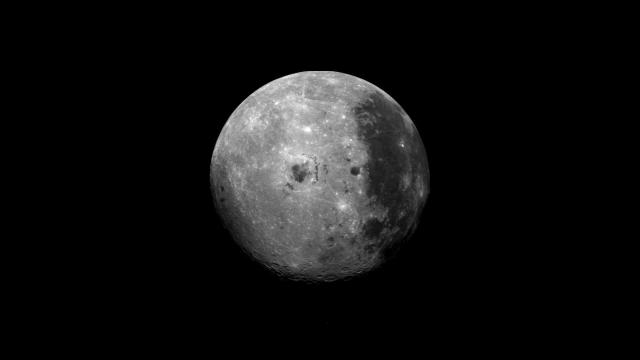
Mary Rose: Diver and archaeologist Christopher Dobbs retires
A diver and archaeologist recalls his 44-year association with Henry VIII's flagship.
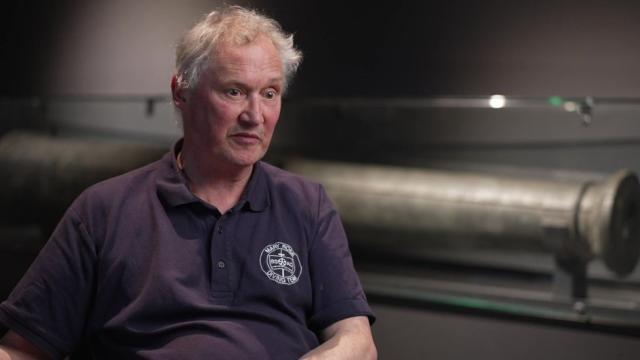
On 11 October 1982, Christopher Dobbs had a unique perspective on one of the most significant events in maritime history - the raising of the Mary Rose.
While millions watched on TV, the marine archaeologist was under the Solent as Henry VIII's flagship slowly moved past him through the murky waters on its way to the surface for the first time in 437 years.
He is now retiring as head of interpretation at the Mary Rose Museum, marking the end of a 44-year association with the wreck.
The warship famously sank in 1545 while leading an attack on a French invasion fleet, with Henry VIII looking on from nearby Southsea Castle.
It is thought about 500 soldiers and sailors perished when the ship went down.
Mr Dobbs was among the early teams of divers who salvaged items from the wreck site after it was discovered, about 40ft (12m) down, on the seabed in 1971.
"That was an amazing experience - on every dive we were coming across objects no-one in the world had seen before," he said.
Mr Dobbs guided the then Prince of Wales on several dives to the wreck as the future king championed the massive archaeological and engineering project which culminated in its raising in 1982.
He recalled the "incredible buzz of excitement and anticipation" on the day as he worked underwater with the lifting bags designed to cushion the fragile hull.
"I can't really describe what it was like when it broke the surface - I was safely cocooned underwater.
"It was nice and quiet, but when I saw the TV pictures there were champagne corks popping and guns firing from Southsea Castle.
"It was amazing to see the Mary Rose lift up from the seabed and move towards the surface, but it was only done through the combination of so many different teams.
"It was touch and go but the great thing was we achieved it."
The timbers were taken to an atmospherically controlled dry dock where they were sprayed with a mist of cold water, then water-soluble wax, before an air-drying process began.
Telling the story of a "Tudor time capsule" with its artefacts including weapons and personal possessions of the crew, has been Mr Dobb's life's work since the raising.
"It was a Portsmouth ship - it was built here and sailed from here during her lifetime. It was part of the Portsmouth culture.
"Although it has international significance, it's also important as a Portsmouth story," he said.
Now housed in a £39m purpose-built museum in Portsmouth Historic Dockyard, visitors are able to view it though floor-to-ceiling windows and walk along a balcony entered through an airlock.
Dr Alexzandra Hildred of the Mary Rose Trust paid tribute to Mr Dobbs' knowledge of the artefacts and their handling as "second to none".
"All the volunteers - both in the museum and the 500 volunteer divers say it's the way he treated and taught them, that he imparted his knowledge about the Mary Rose.
"His contribution to the displays in the museum have to be applauded. What he put into the design of the museum has made it more accessible and available."
As well as carrying out regular dives to check the condition of the wreck site, Mr Dobbs also worked with Unesco and other international organisations protecting shipwreck sites around the world.
One of the Mary Rose Museum's latest innovations is a 4D simulation of diving on the wreck site, narrated by Mr Dobbs.
"I've been so privileged - can you imagine a better job if you are both an archaeologist and a diver than to work on a project like the Mary Rose and then share that with the wider world?," he said.
1510 - The ship is ordered by the newly crowned King Henry VIII and construction begins in Portsmouth. It is launched in 1511.
1545 - On 19 July, at the Battle of the Solent, the ship sinks while leading the attack on the French invasion fleet.
1549 - 1836 - After expert Venetian salvors make unsuccessful attempts to raise the wreck, the ship lies undisturbed for almost 300 years.
1836 - Early pioneering divers, John and Charles Deane, discover the wreck site and raise guns using explosives. They later lose its location.
1965 - A new search for the wreck begins.
1971 - Divers see the first exposed timbers and the site is identified as the Mary Rose.
1979 - 1982 - The ship's contents are excavated by divers and more than 19,000 artefacts are brought to the surface.
1982 - The wreck of the hull is raised. The event is watched live on television by an estimated 60 million people worldwide.
2013 - A £35m Mary Rose Museum opens in Portsmouth.
2016 - Museum visitors finally get an unobstructed view of the wreck.
Tree felling warning over rare red squirrel site
Conservationists fear cutting down trees could threaten a small population of red squirrels.
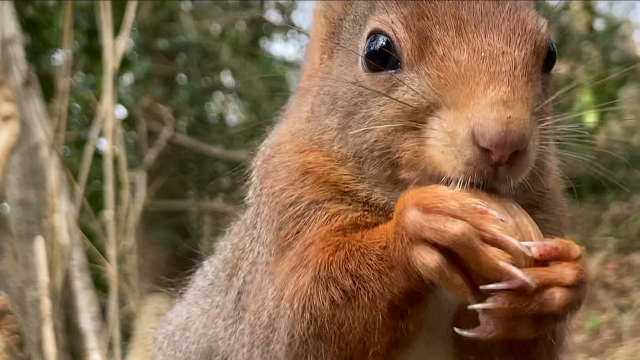
The body responsible for the environment has been accused of threatening one of the last remaining red squirrel sites in part of north Wales.
Natural Resources Wales (NRW) plans to cut down trees in what conservationists fear is one of the only places where native squirrels are now found in Gwynedd.
However, the agency has insisted the work is necessary for public safety reasons, and to prevent disease in larch trees.
The Red Squirrel Trust Wales has called for more conservation measures to be put in place at the location near Bangor.
The trust has lodged a petition with the Senedd flagging its concerns over proposals to fell trees at Parc y Bwlch.
The forestry is on a hillside called Moel y Ci, between Bangor and Bethesda.
The squirrel trust has captured confirmed sightings of the animals on camera, and said there should be monitoring put in place.
Red squirrel populations had started to slowly recover in Gwynedd, after moving from Anglesey, where a project to encourage them has been underway for more than two decades.
But according to the squirrel trust's leading expert, Dr Craig Shuttleworth, outbreaks of squirrel pox virus have devastated the numbers on the mainland.
The virus is spread by non-native grey squirrels, and while it is harmless to them, it is fatal for their red cousins.
"Two years ago it wiped out almost all the red squirrels. That's a huge loss for Gwynedd," said Dr Shuttleworth.
"All we've got left are these small populations of red squirrels and NRW are not monitoring.
"They kind of expect us to keep conserving red squirrels, whilst they keep felling without any conscience about what the impact would be on our project and on this really rare species."
The proposals at Parc y Bwlch would see about a quarter of the trees felled, starting in 2024.
The squirrel trust said monitoring needs to be put in place for a better understanding about the population in the forestry, and more discussions are needed on how the squirrels there can be protected.
NRW officials have met the trust, but Dr Shuttleworth said he felt their advice was not being heard.
"I think the answer is to move forward with a precautionary approach," he said.
"Start listening to the red squirrel project, who have been working in north Wales for 25 years.
"We understand the situation with red squirrels better than anybody. Work in partnership - and be prepared to change your plans if someone can give you a compelling reason, an ecological reason, as to why your plans have to be modified."
NRW said the work at Parc y Bwlch was agreed following a consultation two years ago.
"This work is quite important here, to build a resilient forest that's sustainable and is good for all types of wildlife we have there," said Dylan Williams, the land and assets manager for NRW in north west Wales.
"The forest itself in parts is very mature and the trees are starting to become unsafe.
"Also a good proportion of the forest here is made of larch, which is affected by larch dieback disease.
"It's important that we fell these trees and replace them with better species for all types of wildlife."
NRW officials said they were taking squirrel conservation at the site seriously.
"We are adhering to all our guidance and best practice here," said Mr Williams.
"We are treating this woodland as if it was a noted red squirrel woodland."
The NRW said it wanted to work with the squirrel trust "to get the best outcome".
However, following the matter being raised in the Senedd's petition committee last month, the issue is now likely to be discussed as part of a wider debate on squirrel conservation in north Wales.
It follows other petitions calling for a vaccine against squirrel pox to be developed, with a debate expected to be held in the Welsh Parliament in autumn.
Blue-green algae warning extended along Northern Ireland's north coast
Testing finds that potentially-toxic blue-green algae is moving towards Downhill and Benone.
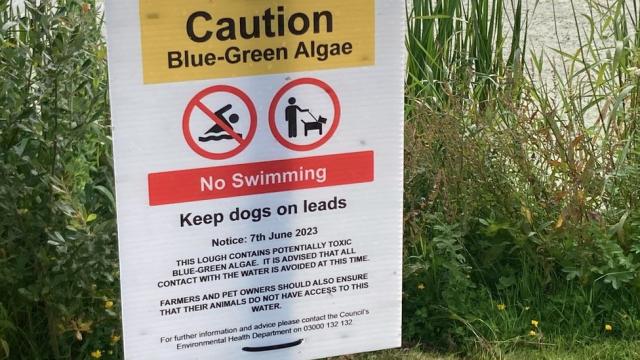
Potentially toxic blue-green algae have been spotted at fresh locations along the north coast, Northern Ireland environmental authorities have warned.
Red flag warnings were extended west to the beach at Downhill on Sunday, the Department of Agriculture, Environment and Rural Affairs (DAERA) said.
These have also been extended to Benone beach as a precautionary measure.
Blue-green algae is not actually an alga but rather a type of bacteria called cyanobacteria.
Swimmers and dog walkers have been advised to adhere to any advice about getting into the water.
Scientists from the Agri-Food and Biosciences Institute are working with DAERA, assisting with modelling to predict how tidal flows will affect the algal blooms.
A scientist told BBC News NI last Friday that the organism cannot survive in salt water, but it was still being washed from Lough Neagh down the River Bann to the coast.
Climate change: Could daffodil diet for livestock help?
Tests have found daffodils could reduce livestock's methane production by about a third.
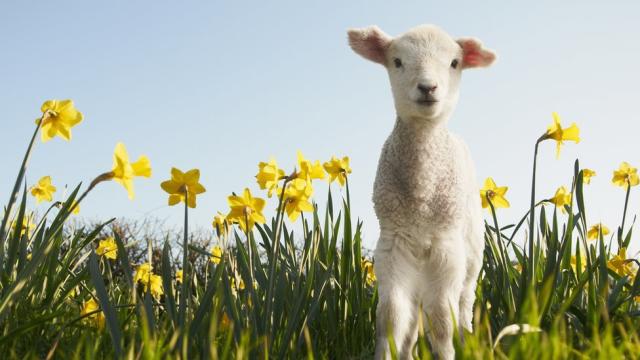
Daffodils have long been seen as a symbol of Wales - but could they also be used to save the climate?
Researchers are testing a new method of using Wales' national flower to cut the level of methane produced by livestock.
Methane is the second most common greenhouse gas after CO2, and is released by livestock, such as cows and sheep, when they burp.
Tests show a chemical extracted from daffodils can reduce methane production by a third when added to cow's feed.
Scientists from Scotland's Rural College have successfully extracted a chemical from the flower called haemanthamine.
In the laboratory, using an artificial cow's stomach, they showed it could reduce emissions by 30% when added to feed.
It is now being tested at a number of farms, including one belonging to Andrew Evans, in Welshpool, Powys.
"It's the national flower of Wales isn't it, so we're in Wales, so we're quite keen on that," he said.
"I think this is doing our bit - being part of a trial that could potentially mitigate the impacts of methane in the environment," added Mr Evans.
Abi Reader, deputy president of farming union NFU Cymru, said the trial "offers a lot of promise" but said it was important that the process was properly assessed.
"As livestock farmers we're definitely up for looking for different alternatives for reducing methane emissions," she said.
"We need to make sure it's safe for them to eat, we need to make sure it's economical and we need to make sure what it is going to do, and reduce that methane."
The climate of Mars changed dramatically 400,000 years ago, Chinese rover finds
A shift in Mars' climate 400,000 years ago produced a change in wind direction that left its mark in the erosion of bright sand dunes.
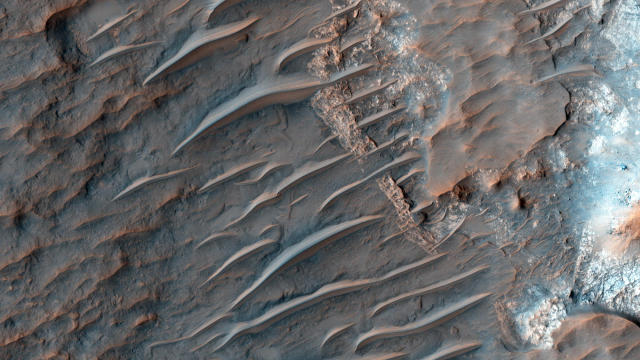
China's Zhurong Mars rover has found evidence of a dramatic shift in Mars' climate 400,000 years ago, in the form of dark ridges laid on top of bright dunes that ripple across the sands of Utopia Planitia, which the rover is exploring.
Zhurong's investigation of the dunes found that their crescent-shaped bodies are made of brighter material underneath the darker material that forms the TARs. From orbit, Tianwen-1 observed 2,262 bright dunes across Mars, and based on the number of craters that have impacted on top of the dunes, the research team estimates that they formed between 2.1 million and 400,000 years ago. That means the dark TARs must have formed on top of them within the past 400,000 years.
These dates coincide with the start and end of Mars' last major ice age. For the TARs to have formed at a different angle to the dunes implies that the wind direction in the lower mid-latitudes must have changed with the end of the ice age.
Both Earth and Mars experience these cycles, which correspond to climatic shifts. In the case of Mars, its angle of rotation (referred to as its obliquity) varied between 15 degrees and 35 degrees between 2.1 million and 400,000 years ago, playing havoc with its climate. Today, Mars' obliquity is about 25 degrees.
RELATED STORIES:
The current geological era on Mars is known as the Amazonian epoch, which began sometimes between 3.55 and 1.88 billion years ago and is defined by the number of impacts over that time.
Huge granite 'body' on far side of the moon offers clues to ancient lunar volcanoes
Scientists have discovered granite created by magma deposits beneath an ancient lunar volcano that erupted around 3.5 billion years ago on the far side of the moon.

A large formation of granite discovered beneath an ancient lunar volcano is further evidence that the far side of the moon once glowed with volcanic eruptions.
The formation of granite on Earth is usually the result of water and plate tectonics creating large areas of melted rock called melt bodies beneath our planet's surface. Though common on Earth, granites are much scarcer on the moon as a result of the absence of both water and plate tectonics. That means this discovery could point toward the conditions locally or globally found on the moon when it was host to volcanic activity.
RELATED STORIES:
'If you don't have water, it takes extreme situations to make granite,' Siegler said. "So, here's this system with no water and no plate tectonics — but you have granite. Was there water on the moon — at least in this one spot? Or was it just especially hot?"
0 Likes
